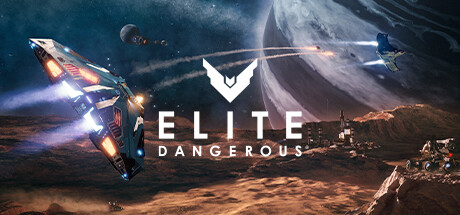A popular Mr Plinket quote, "you didn't notice it, but your brain did",
This is really the icing on the cake, one which they have "done" according to the earlier "pre-alpha" footage,

There is a special magic sauce, which is not turned on yet.
Now you might not notice it in thes orbital shots, (which look amazing)
but as we get closer (they still look amazing by the way except for one tiny aspect)


The star-light is always close to white,
(well the star is blue-white) but the specular highlights are "white", the shadows are always black/grey/white with a tiny hint of star colour,
but it's not blended to the sunset colour.

And it's not just me, it's everyone...
check out the beautiful screenshots on the steam-community hub.
Glorious white specular highlights, and white lighting everywhere. MUWUHAHAHA
BECAUSE Once you see it, you can't unsee it
Apologies.

 steamcommunity.com
steamcommunity.com
Now we could "fake" it by altering the colour grading dynamically (aka the colour tint the screen), which the team had implemented years ago for stations and star-colour.
Or they could alter the colour value of the star from the players perspective?
But I think the coloured starlight and coloured atmospheric effect is it's turned off for now.
In some of the pre-alpha shots, it looks like they have a volumetric effect going on, similar to the god-ray shadows in foggy areas like small nebula or asteroid rings, giving an amazing sense of depth to the shots from space, so mountain ranges could catch coloured light and cast coloured "god-rays" that comes over the mountain tops, but have cooler blue atmospheric hues to other parts of the render that have not been affected by the Raliegh/Mie scattering effect from the sunset. It's all in the first dev-diary but not many screenshots "out there" there to go over with a magnifying glass . You can see it in the mountain range on the first screenshot from the pre-alpha. There is a single shaft of light coming from the bottom of the V in the hills nearest the sun, just to the left of the center of the image.
. You can see it in the mountain range on the first screenshot from the pre-alpha. There is a single shaft of light coming from the bottom of the V in the hills nearest the sun, just to the left of the center of the image.
Jaw-dropping stuff - seriously. Will we see it? is it just a pre-production glory shot not indicative of the actual game footage? I think it's for real, but it's not turned on.
You can see a lot of the volumetric lighting in odyssey in action already, in and around settlements as we have geometric volumes of shadow and light, not a cheap screenspace god-ray bloom effect that stops working when you turn away from the light source. No, no, no Our devs have put in a crazy thing so when fog/dust will pick up player/ship lights but also cut away a geometric volume of shadow, so there is a stark cut of when dust wanders from the light to the dark areas.


Why is coloured lighting not turned on?
Now a telling explanation that we see is that Fdev has stuff turned off features as they work around specific issues that could affect or be affected by said feature (however tangential).
So we know they had occlusion issues during the alpha, and even in the latest patch notes for update 3, they are still working on issues things like planes and zones that affect occlusion and not just what to render and what not to render but lighting and shadowing off geometry rendering (terrain, building, and room construction done which is all being done on the fly and populated by the BGS), and Level of Detail Zones (LOD) boundaries of NPC (hair), objects, lockers etc etc.
I'm still running on Ultra, and everything runs smoothly 60fps, but there is also a bit of a stutter/lurch as stuff loads in/our. which is of course determined by the various boundaries of LODing (a single character/object/geometry will have multiple models to switch between to keep the correct Level of Detail - hence LOD)
Which when our dynamically built Settlements have all their LOD/lighting/shadow/Hit-boxes all accounted for and fixed, I assume all the glossy eye candy can be turned back on and actual graphical optimizations of the shaders and drivers can be worked on.
Let's be honest, we have a camera that can zoom in from low orbit hundreds of kilometres away - this has been a "dream" of many of us Old gamers for decades, as we all wondered how-da-FAQ is that going to work - logistically, how many triangles per screen, how do you define your LOD boundaries, when do you cut off information or just the render, when do you stream in more, unload things?
Yeah, odyssey isn't "there" yet, but my god, it's damned fricking close!!!
Light-dependent (not view-dependent) Volumetric lighting is also another "dream" of mine which is clearly being implemented in Odyssey (and I still can't spell that correctly)
These two things are up there with other dreams like light-dependent/view-independent ambient occlusion, ray-tracing and VR
Which are all happening slowly but surely in the real-time rendering world.
So applause all around to the dev-team.
I'm will be cranky until the day I get it "all", but thank you for putting us on that journey.
This is really the icing on the cake, one which they have "done" according to the earlier "pre-alpha" footage,

There is a special magic sauce, which is not turned on yet.
Now you might not notice it in thes orbital shots, (which look amazing)
but as we get closer (they still look amazing by the way except for one tiny aspect)


The star-light is always close to white,
(well the star is blue-white) but the specular highlights are "white", the shadows are always black/grey/white with a tiny hint of star colour,
but it's not blended to the sunset colour.

And it's not just me, it's everyone...
check out the beautiful screenshots on the steam-community hub.
Glorious white specular highlights, and white lighting everywhere. MUWUHAHAHA
BECAUSE Once you see it, you can't unsee it
Apologies.

Steam Community :: Elite Dangerous
Elite Dangerous - Elite Dangerous: Deluxe EditionElite Dangerous: Deluxe Edition includes:Elite DangerousElite Dangerous: OdysseyAbout the GameElite Dangerous is the definitive massively multiplayer space epic, bringing gaming’s original open world adventure to the modern generation with a...
Now we could "fake" it by altering the colour grading dynamically (aka the colour tint the screen), which the team had implemented years ago for stations and star-colour.
Or they could alter the colour value of the star from the players perspective?
But I think the coloured starlight and coloured atmospheric effect is it's turned off for now.
In some of the pre-alpha shots, it looks like they have a volumetric effect going on, similar to the god-ray shadows in foggy areas like small nebula or asteroid rings, giving an amazing sense of depth to the shots from space, so mountain ranges could catch coloured light and cast coloured "god-rays" that comes over the mountain tops, but have cooler blue atmospheric hues to other parts of the render that have not been affected by the Raliegh/Mie scattering effect from the sunset. It's all in the first dev-diary but not many screenshots "out there" there to go over with a magnifying glass
Jaw-dropping stuff - seriously. Will we see it? is it just a pre-production glory shot not indicative of the actual game footage? I think it's for real, but it's not turned on.
You can see a lot of the volumetric lighting in odyssey in action already, in and around settlements as we have geometric volumes of shadow and light, not a cheap screenspace god-ray bloom effect that stops working when you turn away from the light source. No, no, no Our devs have put in a crazy thing so when fog/dust will pick up player/ship lights but also cut away a geometric volume of shadow, so there is a stark cut of when dust wanders from the light to the dark areas.


Why is coloured lighting not turned on?
Now a telling explanation that we see is that Fdev has stuff turned off features as they work around specific issues that could affect or be affected by said feature (however tangential).
So we know they had occlusion issues during the alpha, and even in the latest patch notes for update 3, they are still working on issues things like planes and zones that affect occlusion and not just what to render and what not to render but lighting and shadowing off geometry rendering (terrain, building, and room construction done which is all being done on the fly and populated by the BGS), and Level of Detail Zones (LOD) boundaries of NPC (hair), objects, lockers etc etc.
I'm still running on Ultra, and everything runs smoothly 60fps, but there is also a bit of a stutter/lurch as stuff loads in/our. which is of course determined by the various boundaries of LODing (a single character/object/geometry will have multiple models to switch between to keep the correct Level of Detail - hence LOD)
Which when our dynamically built Settlements have all their LOD/lighting/shadow/Hit-boxes all accounted for and fixed, I assume all the glossy eye candy can be turned back on and actual graphical optimizations of the shaders and drivers can be worked on.
Let's be honest, we have a camera that can zoom in from low orbit hundreds of kilometres away - this has been a "dream" of many of us Old gamers for decades, as we all wondered how-da-FAQ is that going to work - logistically, how many triangles per screen, how do you define your LOD boundaries, when do you cut off information or just the render, when do you stream in more, unload things?
Yeah, odyssey isn't "there" yet, but my god, it's damned fricking close!!!
Light-dependent (not view-dependent) Volumetric lighting is also another "dream" of mine which is clearly being implemented in Odyssey (and I still can't spell that correctly)
These two things are up there with other dreams like light-dependent/view-independent ambient occlusion, ray-tracing and VR
Which are all happening slowly but surely in the real-time rendering world.
So applause all around to the dev-team.
I'm will be cranky until the day I get it "all", but thank you for putting us on that journey.
Last edited:



